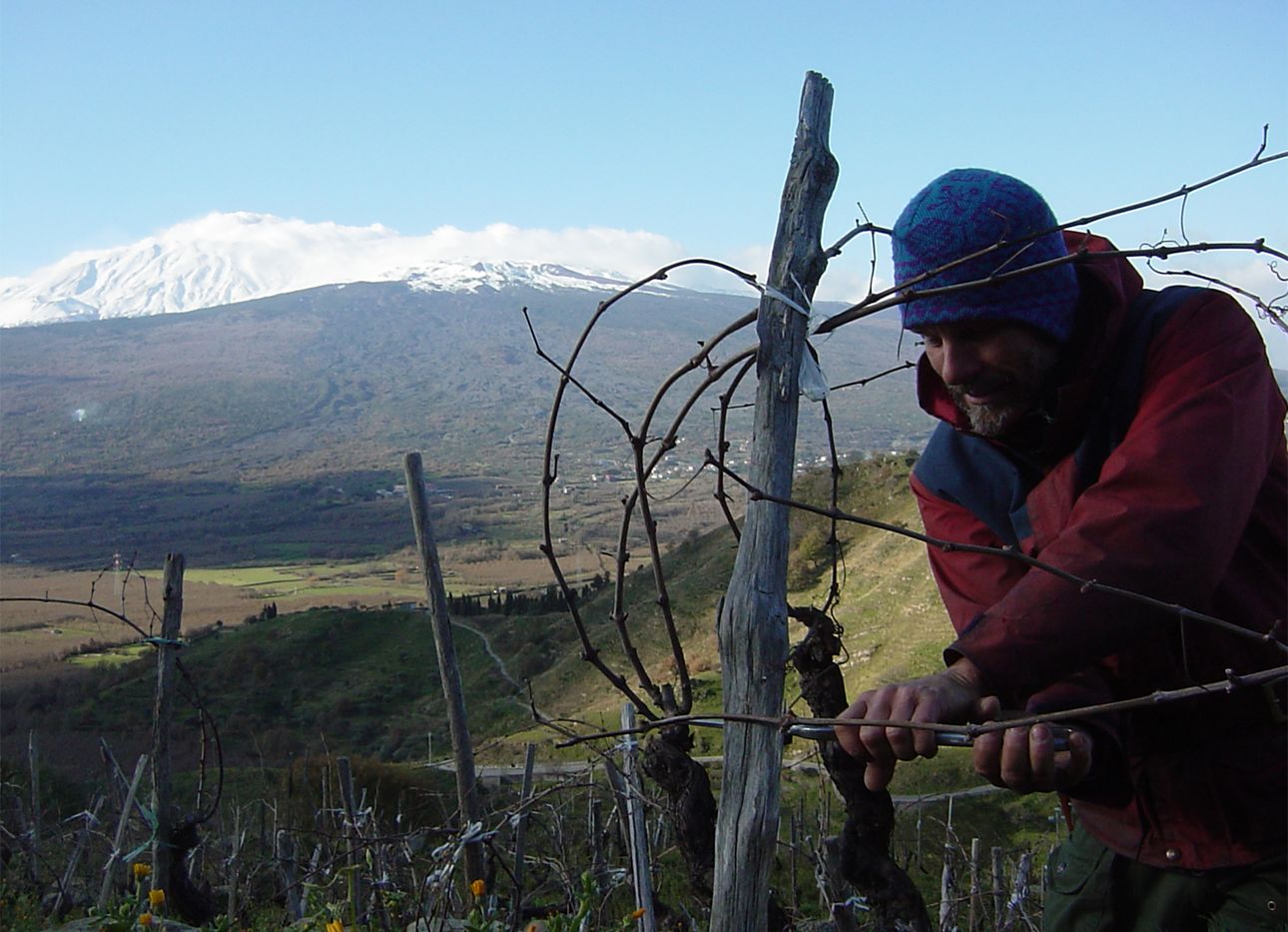
Made from Grapes Grown on an Active Volcano, These Wines Smack of Liquid Stone
In 2001, winemaker Frank Cornelissen bought a vineyard in Sicily, nestled high upon the slopes of Mount Etna, an active volcano. The Belgian transplant had previously worked as a wine broker who, after tasting countless vintages, became convinced that wine, as he puts it, “should show its territory more than the hand of its producer.” After tasting locally produced wine during a visit to Italy, Cornelissen decided to try making his own, with grapes grown in Etna’s distinctive soil, a result of constant changes in seasons and the volcano’s regular outbursts. He has since become an influential voice in a small group of winemakers who are proving that Etna, long ignored by the world of fine wines, can be a source of singular drinks.
Cornelissen’s work is no easy feat. He makes his small-batch natural wines almost entirely by hand, and largely without additives, filtering, or artificial treatments. He learned his trade by trial and error, and chronicles his experiences in a timeline on his website, where diary-like descriptions of each year provide context for the resulting vintage’s flavors. The 2002 production, for example, was issued later than usual, due to Etna eruptions that showered ash on grapes that were having trouble ripening due to excess tannins. The following year, rain fell without cessation, destroying 85 percent of his crop. 2006, a particularly warm period, resulted in complex, highly concentrated wines with more than 17 percent alcohol and volatile acidity.
Recently, the challenging terrain has forced some mellowing. “Until 2018 I used absolutely no sulfur dioxide in the wines,” Cornelissen says. “But that vintage tasted absolutely terrible. I had to adapt.” He now uses the preservative, which is incorporated into most conventional wines, to prevent his drinks from rapidly disintegrating. His farming philosophy is one that accepts nature’s unknowable complexities, and that anticipates that techniques mastered one year may not carry into the next. To avoid the risk of disease and pestilence posed by monocultural farming, Cornelissen’s vineyard, divided into areas for old and new vines, includes a section for olive trees (he also produces olive oils, with an equal commitment to making them taste of the terroir). The remaining land gets planted with fruit trees, vegetables, and buckwheat, which help regenerate the soil.
For those curious about the flavors of volcanic terroir, Cornelissen recommends first trying his mid-range MunJebel, which, on the palate, he says, is “less liquid rock, but more accessible.” Susucaru, a refreshing rosé made from a blend of four grapes, offers a similarly approachable, playful tang. For a purity of place, pour a glass of Magma, Cornelissen’s top wine, which has notes of bright flowers, red fruit, and minerals. Each variety, Cornelissen says, will get better as his vines soak up the full complexity of the earth below, a process that takes longer with volcanic soil than with more traditional clay or limestone. “I am 60 years old,” he says. “Only when I am 80 will I taste our greatest wines.”